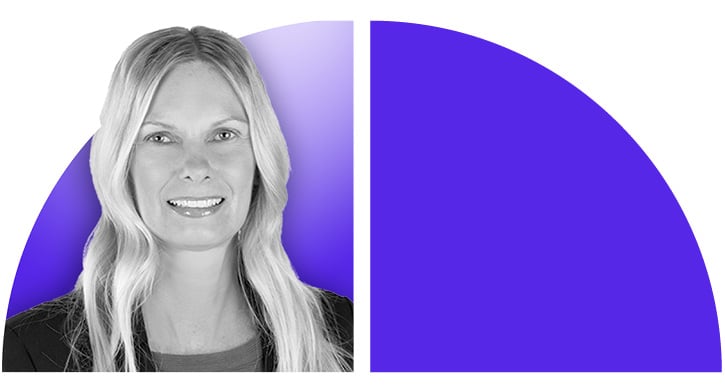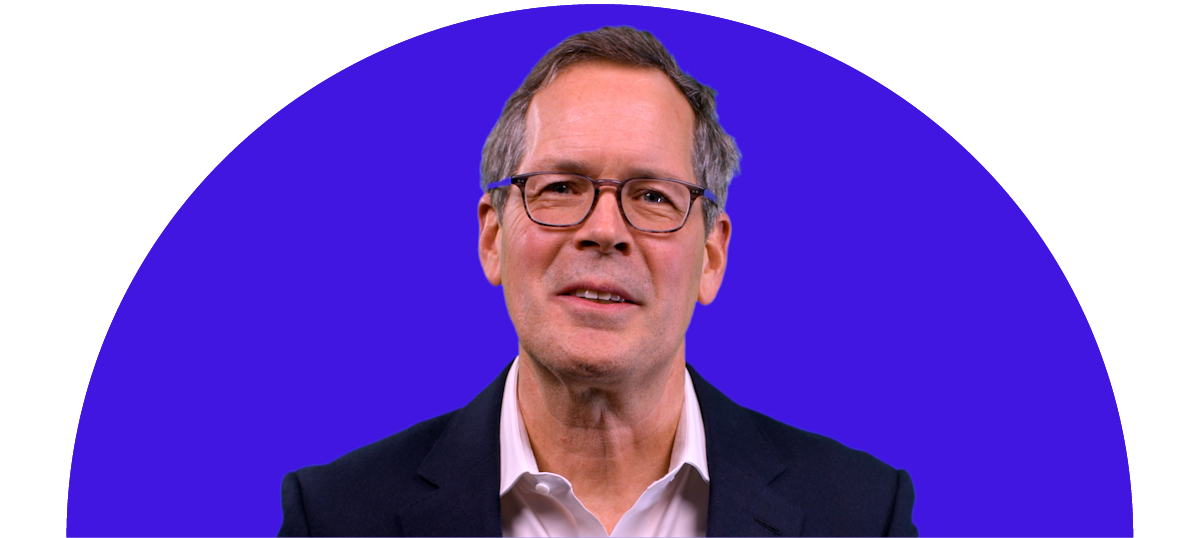PM Spotlight: The Flow to Fixed Income
Janet Rilling, head of Allspring’s Plus Fixed Income Team, was named by Morningstar again in 2023 as one of the top female portfolio managers in the U.S.
Download PDF
Key takeaways
- Starting out as an accountant on the audit side of an accounting firm taught Janet the importance of understanding financial statements and how to evaluate a company’s risk.
- As a lifelong learner, she was attracted to the bond market because of its dynamic nature.
- One way Janet and her team help clients adapt to the higher rate environment is by diversifying across the yield curve—or as Allspring calls it, riding the curve.
Janet Rilling is a senior portfolio manager and the head of Allspring’s Plus Fixed Income team. As a repeated name on Morningstar’s list of top female portfolio managers in the U.S., Janet stays grounded in her approach to investing with a little help from the principles of yoga.
Q: WHAT WAS YOUR CAREER PATH TO BECOMING A FIXED INCOME PORTFOLIO MANAGER?
A: I actually started as an accountant on the audit side at a public accounting firm. That really taught me the importance of understanding financial statements and how to properly evaluate the risk in individual companies. What’s their track record? Do they have the proper checks and balances in place? Do they have the hallmarks of a successful business? It was during that time that I got more and more excited about investing.
The catalyst for my move to investing was actually a shared experience I had with my father. He loved watching the markets. He’d share magazine articles with me about investing and together we watched Wall Street Week with Louis Rukeyser on Friday nights. So as my interest in investing grew, I went back to business school and completed an applied securities investment program. I was part of a student group that ran an actual stock portfolio, which showed me a path to portfolio management. We had to develop our own philosophy and process, implement it in a portfolio, get results, and report those to our board. Those meetings were tough, but it really gave me a full look at what it means to run a portfolio.
Q: WHEN DID YOU MAKE THE TRANSITION FROM STOCKS TO BONDS?
A: After graduation, I started as a corporate bond analyst. Early on, I found that fixed income presented some additional complexities, and I was hooked on that right away. Because the bond market is so dynamic and requires the consideration of a wide range of factors, it's very appealing to someone who wants to be a lifelong learner.
As a corporate bond analyst, my focus was on the bottom-up piece of the process. I analyzed individual company bonds by making an evaluation of their financial position as well as the trajectory of their business. In my current role as a portfolio manager, I combine that perspective along with a top-down view. That top-down view involves understanding the macro environment and how the interplay of the economy, central bank actions, and government fiscal policies influence the level of rates.
And because fixed income portfolio management is really the intersection of a wide range of factors, I believe these portfolios are best managed by a team. Within our multi-sector portfolios, for example, we bring together a team with a range of expertise.
 Because the bond market is so dynamic and requires the consideration of a wide range of factors, it’s very appealing to someone who wants to be a lifelong learner.
Because the bond market is so dynamic and requires the consideration of a wide range of factors, it’s very appealing to someone who wants to be a lifelong learner.
Q: WHAT ARE YOU HEARING FROM INVESTORS THAT’S CURRENTLY KEEPING THEM UP AT NIGHT?
A: Investors are still heavily focused on the level of interest rates and how to invest as the Federal Reserve moves to ease the policy rate. While the peak in rates for the cycle may be behind us, the good news is that rates are still elevated compared with the decade averages. If you start with higher income and higher yield, it puts you in a better spot. Sometimes investors want to know about adding duration to their portfolio. Higher rates have made front-end yields quite enticing, and many investors have stayed put in money market accounts and other short-duration fixed income options even though the Federal Reserve is no longer focused on rate hikes. We’ve talked with some investors about moving part of their allocations out along the yield curve. Post an interest-rate-hiking cycle, duration has the potential to add balance to a portfolio.
Q: CAN YOU GIVE AN EXAMPLE OF WHAT THAT LOOKS LIKE?
A: We call it riding the yield curve. The idea is to diversify across the yield curve. It’s possible to add diversification by reallocating some cash across several buckets of different durations. And that doesn’t have to be all at once—it can be in small or incremental amounts every month or two, continuing to move out the curve without trying to time interest rate changes. Ultimately, more diversified exposure across the yield curve could add more of a cushion to the portfolio for a wider range of outcomes.
For example, in a risk-off environment, having that extra duration could be helpful in a portfolio. However, added duration could end up being less favorable if interest rates were to move up significantly. When rates were close to zero, any move up in rates was generally negative across the board. In terms of total returns today, bonds are generally producing some income that can partially offset some of the potential move upward in rates.
 Ultimately, more diversified exposure across the yield curve could add more of a cushion to the portfolio for a wider range of outcomes.
Ultimately, more diversified exposure across the yield curve could add more of a cushion to the portfolio for a wider range of outcomes.
Q: MORNINGSTAR NAMED YOU ONE OF THE TOP FEMALE PORTFOLIO MANAGERS IN THE U.S. AGAIN THIS YEAR. LOOKING BACK AT YOUR OWN CAREER, HOW WOULD YOU ADVISE WOMEN ENTERING THE ASSET MANAGEMENT INDUSTRY?
A: First, I strongly encourage women to think seriously about a career in asset management. Women can bring a different perspective and approach to investing that ultimately can lead to better outcomes for clients. It’s a very satisfying career. There’s always something new to learn, challenges to solve, and opportunities to face. And when that’s helping a client meet their financial goals, it’s very gratifying.
Second, people often talk about finding a mentor, but that isn’t always easy. Another option I like is to identify people you think are good role models and study their decision-making—what worked out well and what didn’t? What does that tell you about your own traits and what you want to focus on? That can be even more beneficial than having a mentor because you can draw from a wide range of leaders and identify what works best for you.
And third, as your career progresses, focus on your strengths and figure out how to leverage them. That can be especially important in a team environment where you get the benefit of synergies. Being self-aware of your strengths can be really helpful.
Q: SPEAKING OF PERSONAL STRENGTHS, YOU’RE ALSO QUITE A PHYSICALLY ACTIVE PERSON.
A: I do a lot of different physical activities, but yoga is my favorite. Interestingly, there are aspects of investing that have helped me in yoga and vice versa. Number one is humility. In yoga, there is always a more challenging pose to strive for. But if you push beyond what is healthy for you, the result can be injury. Yoga really teaches you to put ego aside and stay focused on what matters most.
Humility is also important in investing. Volatile markets can be unsettling and pose challenges. Staying grounded and avoiding overconfidence and other cognitive biases is critical.






